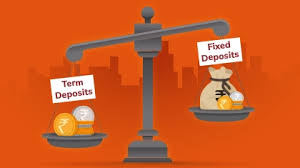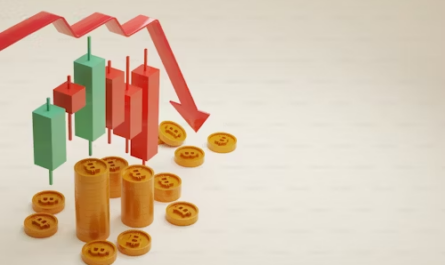Fixed Deposits (FDs) are a popular investment option due to their safety, assured returns, and simplicity. However, there are situations where breaking your FD before maturity to reinvest the funds might be more profitable. Understanding these scenarios and the factors influencing your decision can help you maximize your investment returns.
Interest Rate Fluctuations
One of the primary reasons to consider breaking your FD early is the fluctuation in interest rates. If you had locked in your FD at a lower interest rate and the market rates have since risen significantly, it might be worth breaking your current FD to reinvest at the higher rate. The additional interest earned over the new tenure can offset the penalty for premature withdrawal and provide a net gain.
For instance, if you have an FD earning 5% interest and the prevailing rates have increased to 7%, breaking your FD and reinvesting at the higher rate could be beneficial. Calculating the break-even point, where the gains from the higher interest rate surpass the penalty and loss of interest from the old FD, is crucial in this decision.
Penalty for Premature Withdrawal
Banks and financial institutions impose a penalty for breaking an FD before its maturity. This penalty usually ranges from 0.5% to 1% of the interest earned. Before deciding to break your FD, it’s essential to calculate the total cost of this penalty and compare it with the potential gains from reinvesting at a higher interest rate.
For example, if breaking your FD incurs a penalty of 1% and the new FD offers a 2% higher interest rate, the net gain might still be substantial after accounting for the penalty. However, if the difference in interest rates is marginal, the penalty could negate any potential gains, making it unwise to break the FD.
Want to book your funds in an FD where you can get the highest returns? Download the Airtel Thanks app and book your FD today with just a few documents.
Read more: Tips for maximising your fixed deposits
Changing Financial Goals
Your financial goals and needs can change over time. If your current FD no longer aligns with your financial objectives, breaking it to reinvest in a more suitable option might be the right choice. For example, if you initially invested in a short-term FD but now have long-term financial goals, switching to a longer-term investment with higher returns can be advantageous.
Additionally, if you need immediate liquidity for unforeseen expenses or a better investment opportunity, breaking your FD can provide the necessary funds. However, ensure that the benefits of the new investment outweigh the costs associated with breaking the FD.
Tax Implications
Tax considerations play a significant role in deciding whether to break your FD. Interest earned on FDs is taxable, and breaking an FD can affect your tax liability. For example, if breaking your FD pushes you into a higher tax bracket, the additional tax burden might offset the benefits of reinvesting at a higher rate.
It’s essential to evaluate the post-tax returns of both the existing and the new FD to determine if breaking the FD is profitable. Consulting a tax advisor can provide clarity on the tax implications and help you make an informed decision.
Read more: Fixed deposit laddering – what it is and how it works
Reinvestment Options
Before breaking your FD, explore the available reinvestment options. Look for investment opportunities that offer higher returns than your current FD. These could include high-yield savings accounts, mutual funds, or other fixed-income instruments. Assess the risk, return, and liquidity aspects of these options to ensure they align with your financial goals.
For instance, if the new investment option provides significantly higher returns with manageable risk, breaking your FD could be a strategic move. However, if the alternatives do not offer a substantial improvement in returns, it might be better to let your FD mature.
FAQs
- Is breaking an FD always profitable if interest rates rise?
Not necessarily. While higher interest rates can offer better returns, the penalty for premature withdrawal and the loss of interest on the old FD must be considered. Calculate the net gain to determine if breaking the FD is profitable.
- How is the penalty for premature withdrawal calculated?
The penalty for premature withdrawal is typically a percentage of the interest earned or the principal amount. This percentage varies across banks and financial institutions. Check with your bank for the specific penalty rates.
- Are there any tax benefits for reinvesting after breaking an FD?
Breaking an FD and reinvesting does not directly provide tax benefits. However, if the new investment option has tax-saving features under Section 80C or offers tax-free returns, you could benefit from lower tax liability.
- Can I avoid penalties for breaking my FD?
Some banks offer FDs with no premature withdrawal penalties, but these usually come with lower interest rates. In most cases, penalties are unavoidable. Compare the penalty cost with the potential gains from reinvesting to decide.
- Should I consult a financial advisor before breaking my FD?
Yes, consulting a financial advisor can help you understand the financial and tax implications of breaking your FD. They can provide personalized advice based on your financial goals and market conditions.
Read more: What is a cumulative fixed deposit? How does it work?
Breaking an FD to reinvest can be a profitable decision under the right circumstances. By considering interest rate fluctuations, penalties, changing financial goals, tax implications, and reinvestment options, you can make an informed choice that maximizes your returns.


 Get App
Get App  Airtel Store
Airtel Store  Login
Login 


